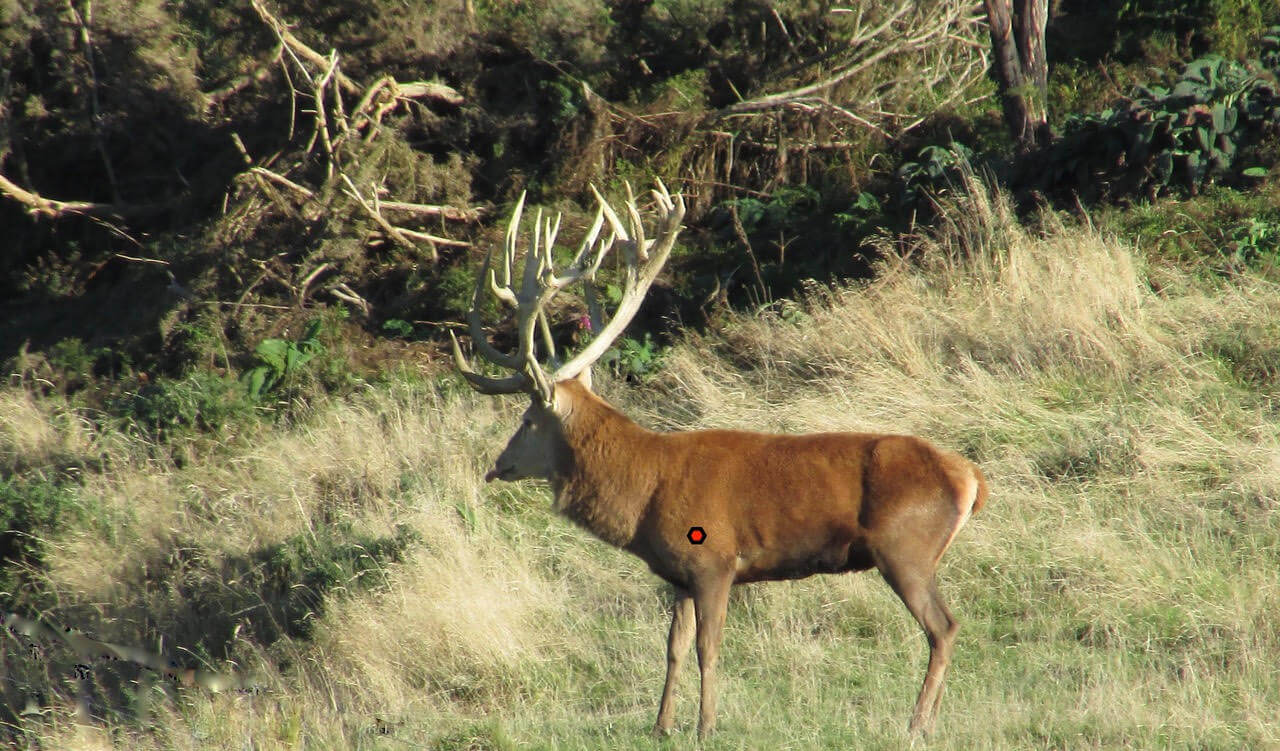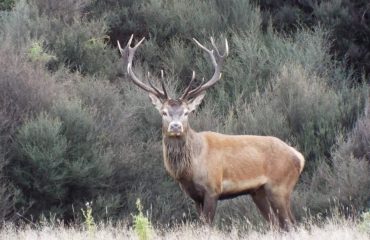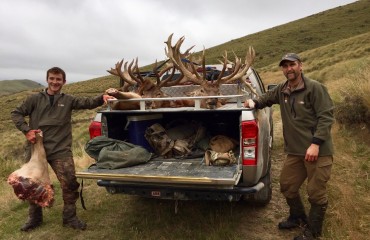Red Stag Shot Placement
Like many of the deer species the lungs and heart are in the lower quarter of the Red Stag, approximately the size of a dinner plate.
For Red Stag shot placement judging half way going from the top of the shoulder and bottom of the chest you should aim slightly under half way. Being more of a medium skinned animal Red Stags like all animals can be extremely tough during the rut to take down so use appropriate calibers again that deliver good kinetic energy and you can handle to shoot accurately. Muzzle breaks or preferably suppressors are excellent options if you’re worried about recoil and the latter noise. All of our New Zealand Safaris rifles are equipped with suppressors.
A suitable range between 80-250 yards and take time to make the shot. Bow hunting on these guys will get your heart pumping with average shots at approximately 40 yards where we can use cover, calling, and blinds to get in close.
When discussing red stag shot placement, we are typically aiming for double lung, braking both shoulders and potentially also hitting heart which would be the ideal shot. As every hunter knows animals do not always stand square on at 90% and waiting for the perfect alignment can mean not getting a shot.
First and foremost if you are not confident with taking a shot don’t take it. It’s not worth pointing your rifle and shooting or ball parking it. Preparation before the shot and knowing where the vitals are is important in making sure you are taking an ethical shot. With a steady rest you can make those quartering shots if need be. Stags will often turn to face you if they have been alerted or winded you for a brief moment, it may be your best opportunity. Preparation really equals opportunity.
When lining up red stag shot placement it’s always important to think about bullet exit over entry as this is where maximum damage occurs so look at where the off set leg is positioned and body. Front on low down and allow for the exit. Another fatal shot that can be taken if you are very confident and your rifle is a tack driver is at the base of the neck and the spine.





